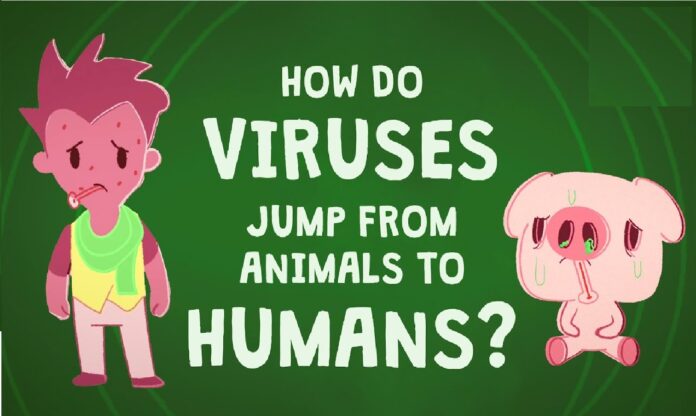(NTI): In the wake of the Covid-19 pandemic, scientists remain vigilant about emerging infections worldwide. Viral diseases such as bird flu, mpox, and others are now raising alarms as they successfully transition from animals to humans. This process, called zoonotic transmission, has become a major concern for public health experts globally.
The Rise of Animal-to-Human Viruses
The avian influenza virus, or bird flu, has devastated animal populations since 2021, with millions of deaths reported across the UK, US, Australia, and even Antarctica. Various strains, including H5N1 and H9N2, have since been detected, including in regions of India like West Bengal. Meanwhile, mpox, formerly known as monkeypox, captured global attention in 2022 due to its widespread transmission among humans.
These viruses, originating in animals, have managed to adapt to human hosts, sparking new infections that pose significant public health challenges. Scientists and medical experts are closely monitoring these developments, understanding that increased human-animal interactions are only accelerating these trends.
What Are Zoonotic Diseases?
Zoonoses, or zoonotic diseases, refer to infections that are transmitted from animals to humans. These diseases can be caused by bacteria, viruses, fungi, or parasites, and are often the result of close contact with infected animals. Some zoonoses have become notorious for causing large-scale outbreaks, such as Ebola, salmonellosis, and the ongoing HIV/AIDS epidemic, which originated from primates.
The latest examples of zoonotic diseases—mpox, bird flu, and SARS-CoV-2 (the virus behind Covid-19)—underscore the growing frequency of such transmissions. The ever-increasing proximity between humans and animals, driven by factors like deforestation and urban expansion, is contributing to this surge.
Why Are Zoonotic Diseases Increasing?
Zoonotic diseases are not a recent phenomenon; they have existed for centuries. However, human activities are now playing a significant role in their rise. Microbiologist Dr. Varsha Shridhar, an expert in infectious diseases, notes that deforestation, industrialization, and increased human-animal contact are creating more opportunities for pathogens to make the leap from animals to humans.
“As human populations encroach on animal habitats, the likelihood of encountering zoonotic pathogens rises significantly,” Dr. Shridhar explained. Activities such as farming, wildlife trade, and even the consumption of bushmeat increase the chances of virus transmission, as seen with HIV, which originally came from monkeys and apes.
Climate Change and Human Impact
Climate change is another key factor driving the rise of zoonotic diseases. As global temperatures increase and ecosystems degrade, the balance between humans, animals, and the environment becomes destabilized. Extreme weather events can disrupt animal migration patterns, leading to greater contact with humans and the spread of infectious diseases.
For example, the 1918 influenza pandemic, caused by the H1N1 virus, spread in part due to disrupted bird migrations triggered by unusual weather conditions. This historical example illustrates how environmental factors can exacerbate the spread of zoonotic diseases.
Dr. Shridhar also highlighted the impact of biodiversity loss, warning that as humans destroy ecosystems, they increase exposure to disease-carrying animals and insects. “When we disrupt the environment, we’re essentially increasing the likelihood of cross-species transmission,” she said.
How Can We Protect Ourselves?
Preventing zoonotic diseases requires both individual and systemic actions. On an individual level, maintaining good hygiene, such as regular handwashing and cleanliness, can reduce the risk of infection. While these measures may seem simple, they are not always accessible to those living in poverty or without access to clean water.
Dr. Shridhar also advises caution in human-animal interactions, particularly in areas where zoonotic diseases are prevalent. Maintaining a healthy lifestyle, eating nutritious food, and keeping living environments clean can help bolster immunity and reduce vulnerability to infections.
Strengthening Public Health Systems
At a broader level, public health preparedness is crucial in tackling zoonotic diseases. Surveillance systems that integrate data from human, animal, and environmental sources are vital for identifying outbreaks early and implementing preventive measures. Dr. Shridhar’s work with Precision Health exemplifies this approach, as the platform collects and analyzes data across sectors to predict and prevent future disease outbreaks.
Public health systems must also adapt to local conditions, involving both top-down and bottom-up strategies. Empowering local communities to report data and inform interventions can lead to more targeted and effective responses.
Zoonotic diseases represent a growing threat to global health, demanding concerted efforts to mitigate their impact. By improving hygiene practices, promoting environmental conservation, and strengthening public health infrastructure, we can reduce the risk of zoonotic outbreaks. Collaborative action is essential in ensuring a safer, healthier world for future generations.


